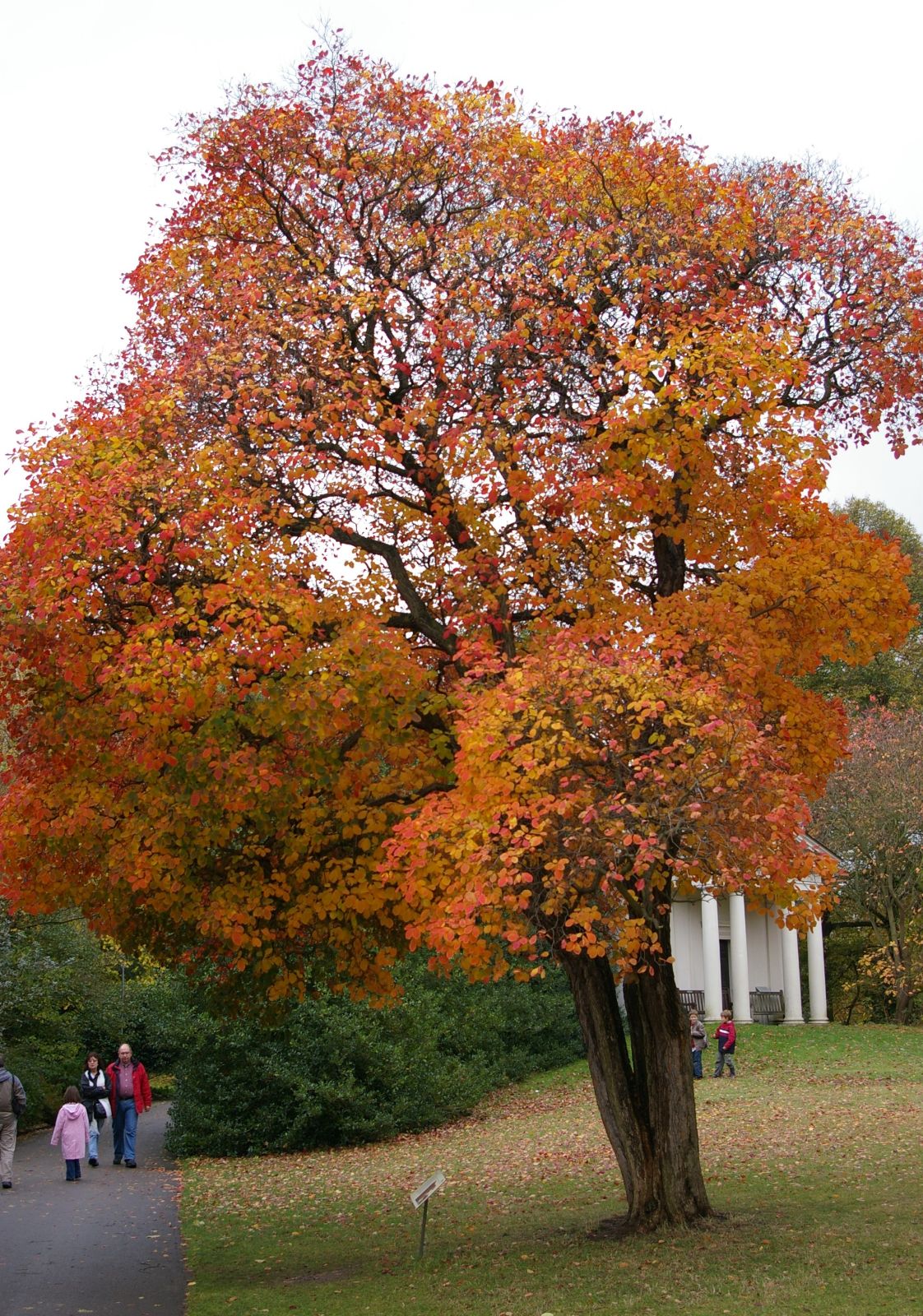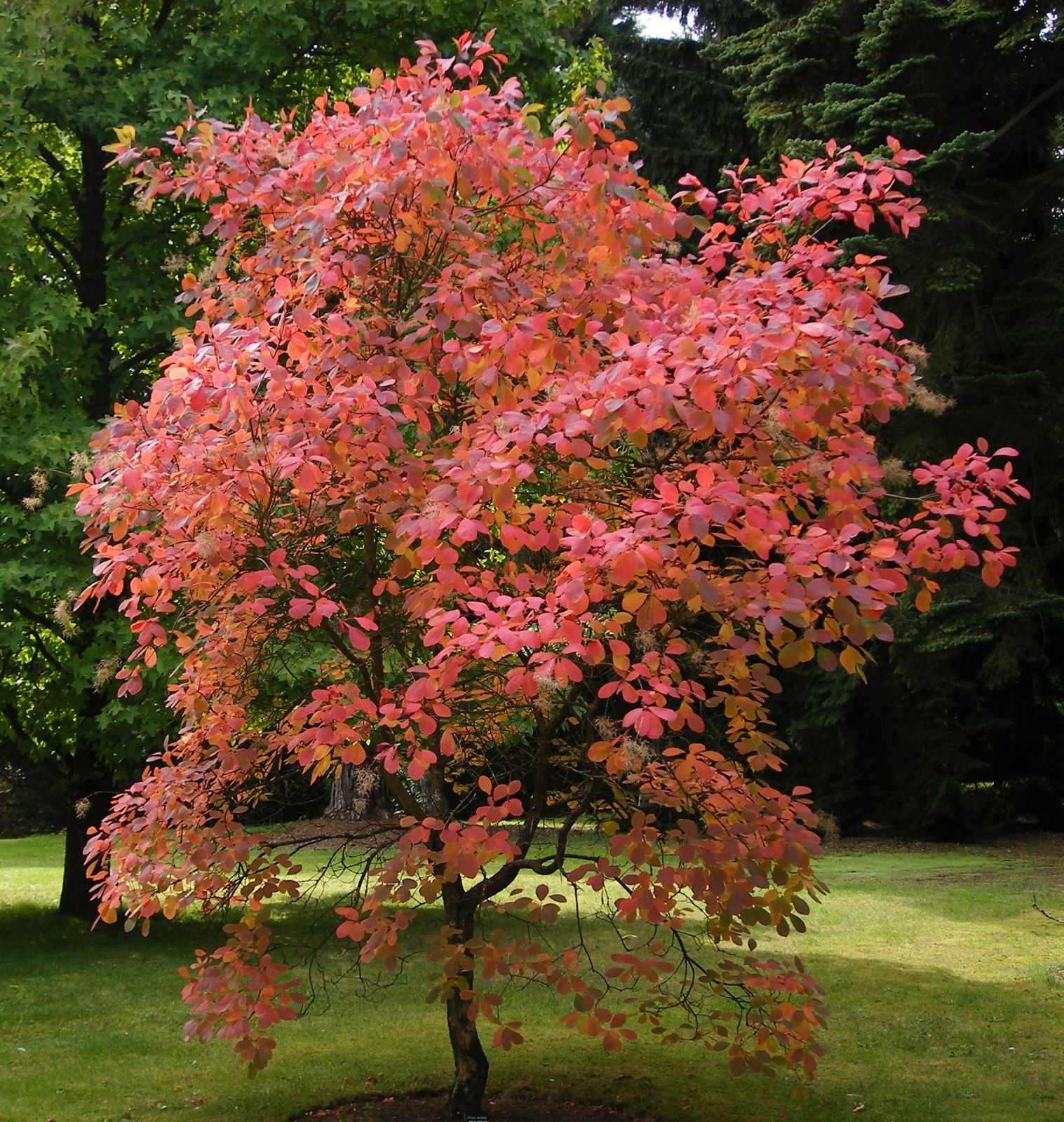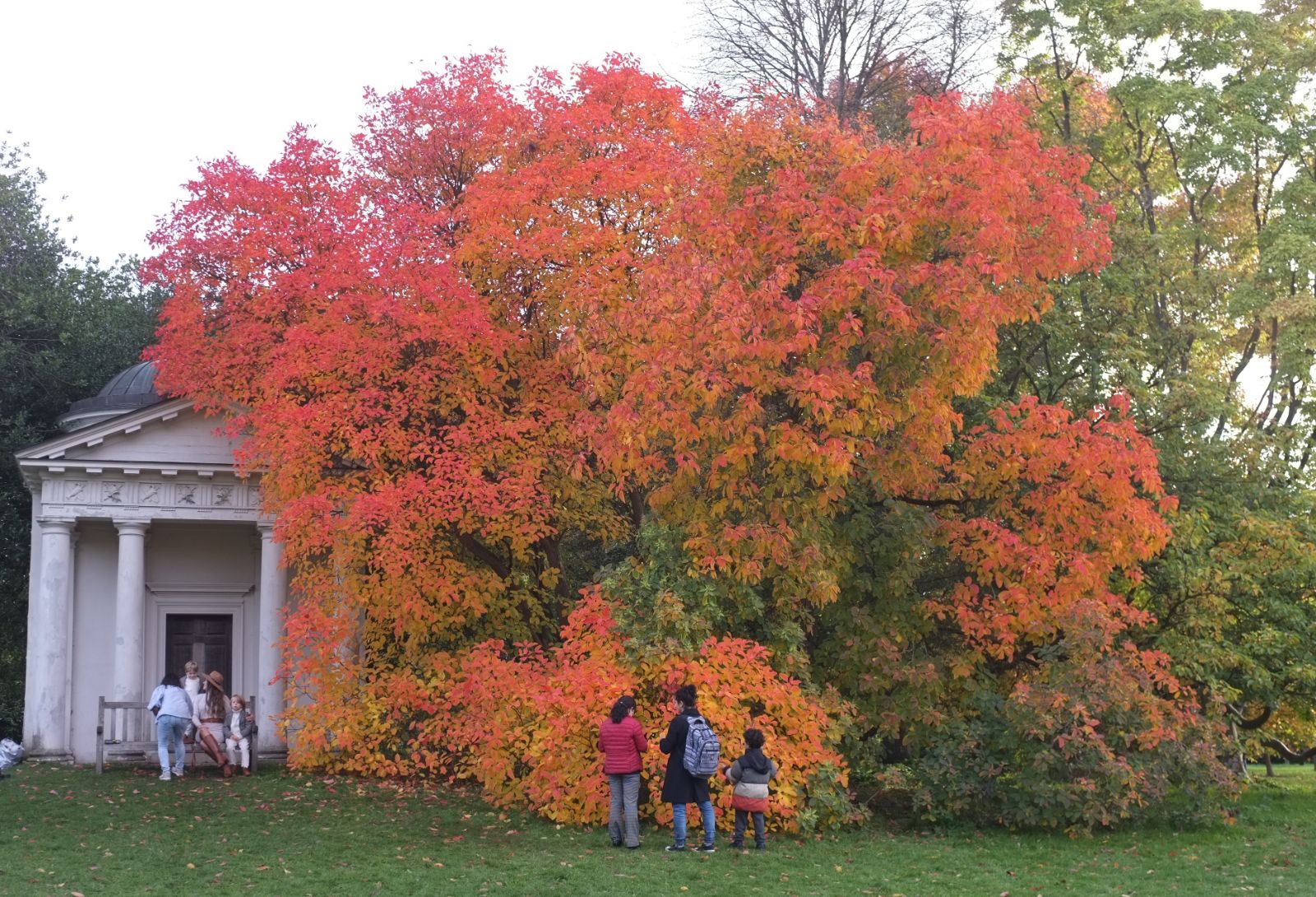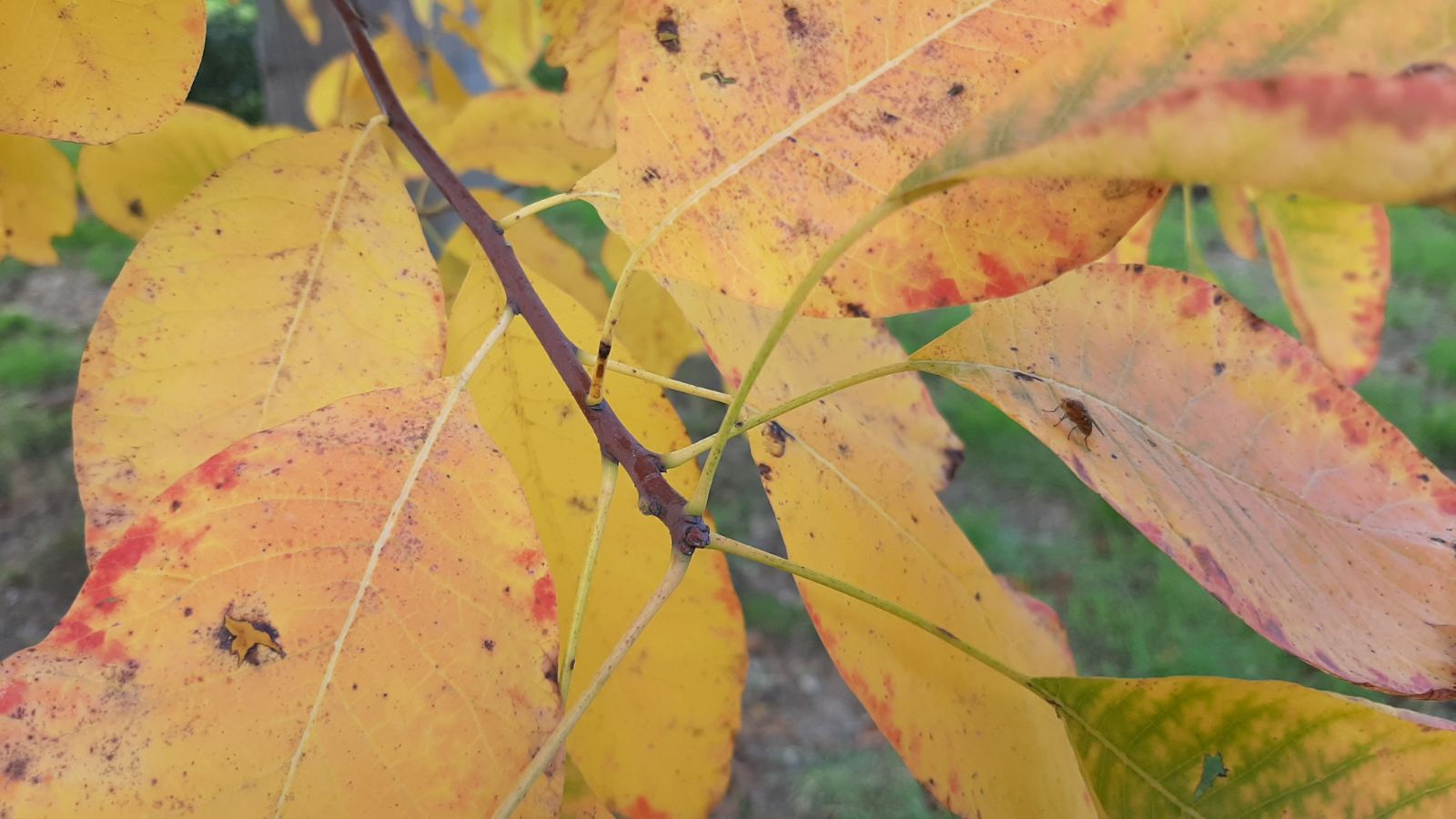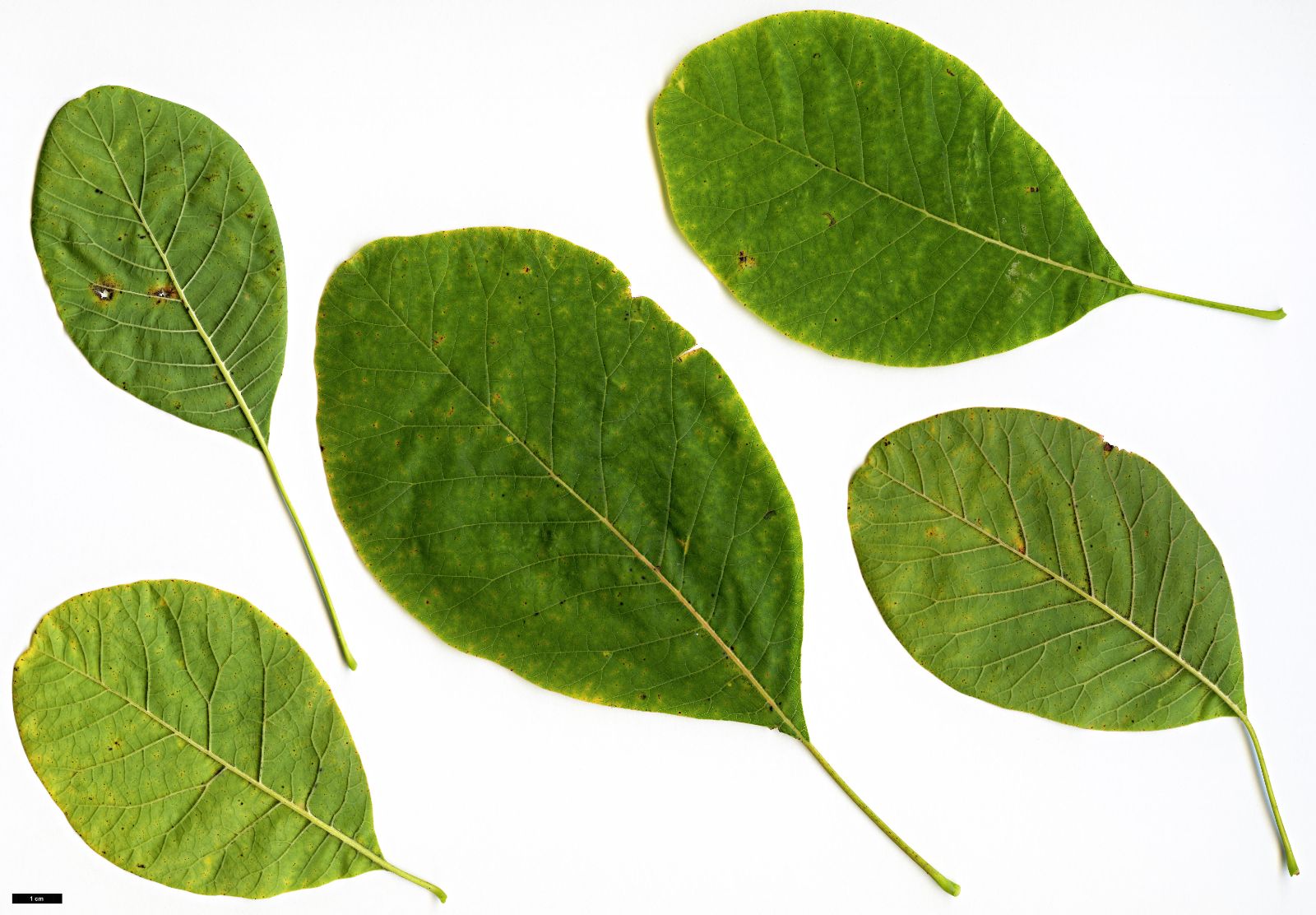Cotinus obovatus
Credits
Article from Bean's Trees and Shrubs Hardy in the British Isles
Recommended citation
'Cotinus obovatus' from the website Trees and Shrubs Online (treesandshrubsonline.
Genus
Synonyms
- Rhus cotinoides Nutt.
- Cotinus americanus Nutt.
A deciduous shrub or small tree, as much as 30 ft high in a wild state, its trunk 1 ft or more in diameter; in this country usually under 15 ft high, the young vigorous shoots and leaves often reddish purple. Leaves simple, obovate or oval, varying much in size according to the age and vigour of the plant, but ordinarily 2 to 5 in. long, rather more than half as wide; tapering to the stalk (which is 1⁄2 to 11⁄2 in. long), but broad and rounded at the apex. In the female plant the flowers are borne on a large, sparse, terminal panicle, 6 to 12 in. long, three-fourths as wide. The larger proportion of the final ramifications of the inflorescence do not carry a flower, but are mere thread-like stalks clothed with fine hairs. Fruit 1⁄8 in. long, very sparsely produced. The male plant has the inflorescence better set with flowers.
This remarkable species is found in a few isolated localities in Tennessee, Alabama, and other south-eastern United States, but is nowhere common. First discovered by Nuttall in 1819, it did not reach this country until 1882, when it was sent to Kew by Prof. Sargent. In the beauty of its inflorescences it is very much inferior to Cotinus coggygria, but, on the other hand, it is one of the loveliest of all shrubs in autumn, its leaves turning to various shades of scarlet, claret colour, and orange before they fall. Disappointment has sometimes been caused by the failure of this shrub to colour as described, but this is nearly always due, so far as I have seen, to over-generous conditions at the root. In order to bring out its best colour, it should not be grown in rich or manured soil, which renders the growth too rank and coarse. The spring foliage is of a beautiful pinkish bronze. In a wild state it is said to be in danger of extinction; many large specimens have been cut down for the dye obtained from the wood, especially during the Civil War in N. America.
It has been confused with C. coggygria but may be distinguished by the leaves, which are silky-downy beneath when young, more obovate in shape, and wedge-shaped at the base.

